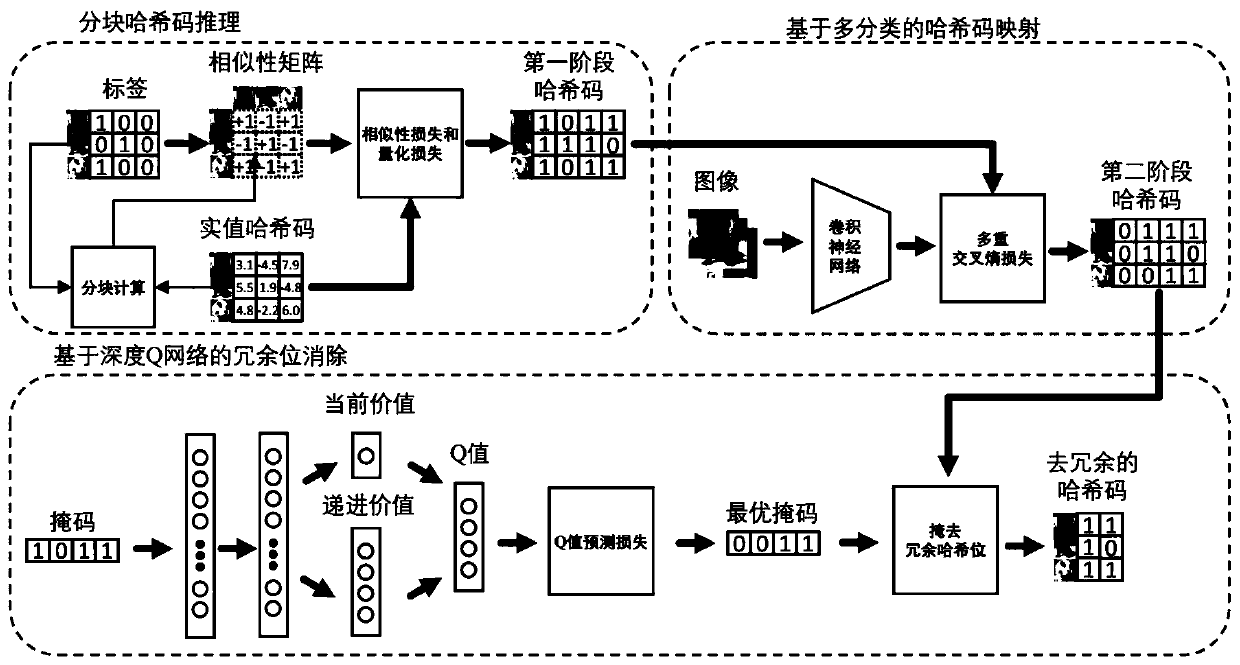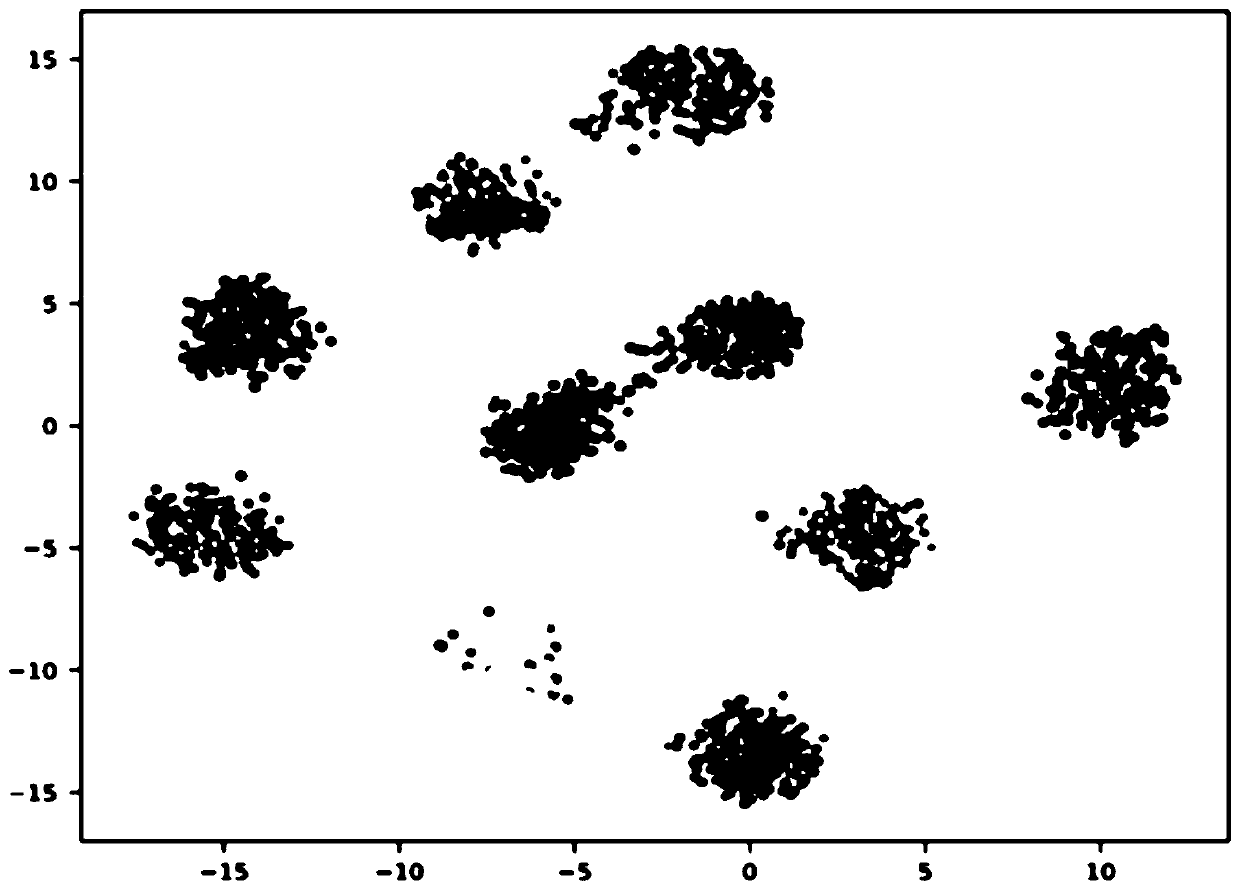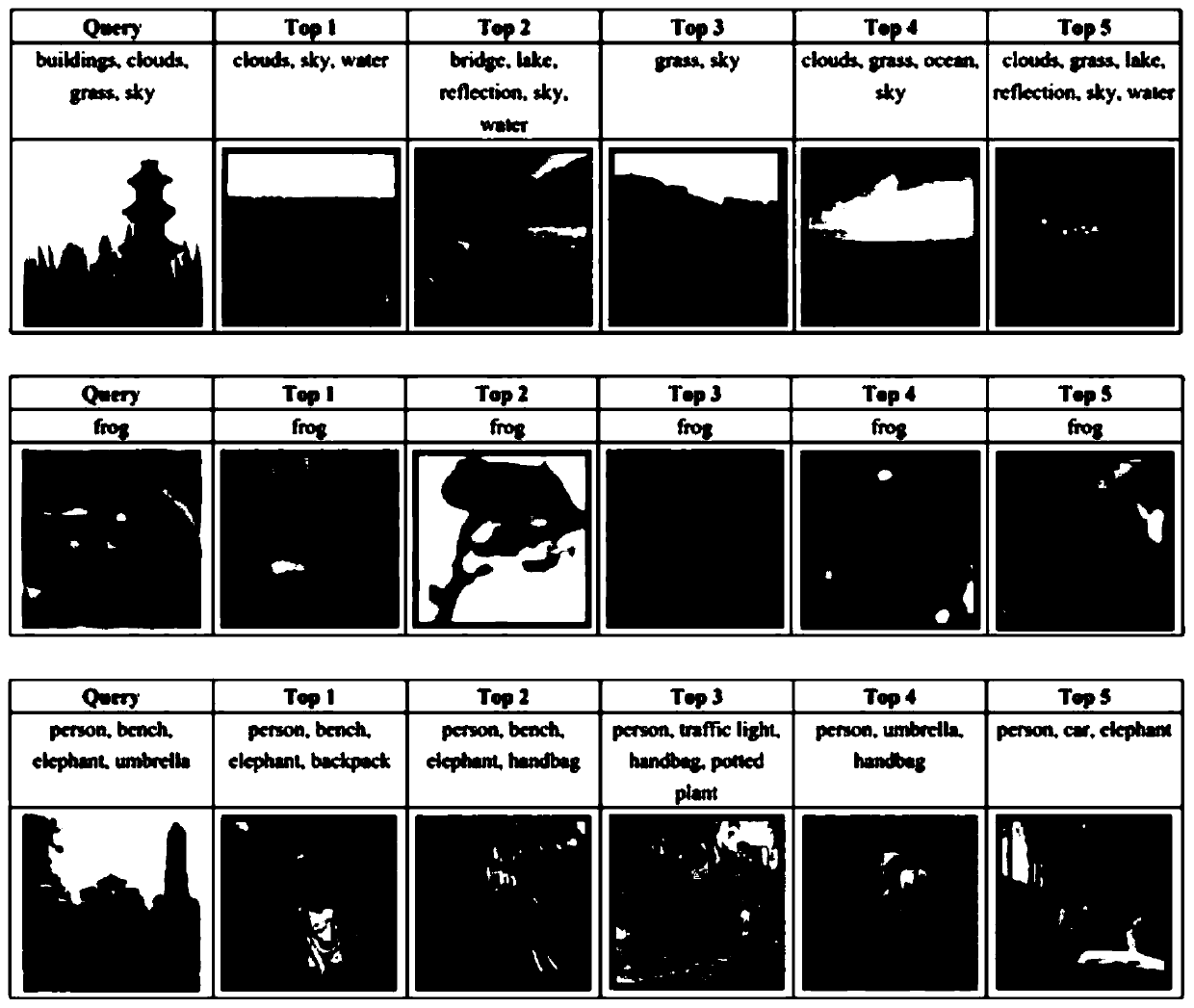Image retrieval-oriented deep reinforcement redundancy elimination Hash algorithm
An image retrieval and depth technology, applied in still image data retrieval, still image data query, reasoning methods, etc., can solve the problems of hash code including redundancy, low sampling efficiency of hash algorithm, inability to maintain global similarity, etc. Achieve the effect of fast training speed, saving storage overhead, and saving computing overhead
- Summary
- Abstract
- Description
- Claims
- Application Information
AI Technical Summary
Problems solved by technology
Method used
Image
Examples
Embodiment Construction
[0031] It can be seen from the background technology that there are two main defects in the existing hash algorithm for similarity image retrieval. First, most hashing algorithms are trained in small batches, which has low sampling efficiency and cannot maintain global similarity information. Second, the hash codes generated by most hash algorithms contain some redundant bits or even harmful bits. Removing these bits can not only improve the retrieval accuracy, but also reduce computing and storage costs. Therefore, this embodiment addresses the above two problems by using hash code reasoning based on block calculation and hash code de-redundancy based on deep reinforcement learning respectively.
[0032] In this embodiment, the label information is first used to construct a similarity matrix:
[0033]S=min(YY T ,1)×2-1 (6)
[0034] where, S∈{-1,+1} n×n , S ij =+1 means that the i-th image is similar to the j-th image; S ij = -1 means that the i-th image is not similar t...
PUM
 Login to View More
Login to View More Abstract
Description
Claims
Application Information
 Login to View More
Login to View More - R&D
- Intellectual Property
- Life Sciences
- Materials
- Tech Scout
- Unparalleled Data Quality
- Higher Quality Content
- 60% Fewer Hallucinations
Browse by: Latest US Patents, China's latest patents, Technical Efficacy Thesaurus, Application Domain, Technology Topic, Popular Technical Reports.
© 2025 PatSnap. All rights reserved.Legal|Privacy policy|Modern Slavery Act Transparency Statement|Sitemap|About US| Contact US: help@patsnap.com



